The West is describing the current situation in Afghanistan as one of transition. This assumes that the situation is moving from one state of things to another in a planned and controlled manner. It is clear that US and NATO want to reduce their military presence and commitment to Afghanistan. President Obama has announced a draw-down of US forces, limited in number this year, but bigger in scope next year. US forces will declaredly withdraw from an active combat role by 2014, shifting to a supportive role as the responsibility for providing security to the country devolves on the Afghan National Security Forces.
But transition should not be looked at from the security perspective alone. In that regard too the situation lacks clarity. Even as the US is withdrawing its leaders insist that they are not going to abandon Afghanistan, that they will maintain their long term commitment to it and not allow any single country to dominate Afghan affairs. The US is already discussing a long term strategic accord with President Karzai and a Status of Forces Agreement. It is widely accepted that the US will retain a sizable military contingent in Afghanistan beyond 2014 and probably four or five bases. This has implications for regional countries, as well as Russia. President Karzai will have to allay their concerns by seeking some sovereign control over the US presence and operations in the longer term perspective, especially as US’s continued presence in Afghanistan will be integral to its Central Asian policy.
The political and economic dimension of transition is equally important. Here there is even more uncertainty. While the military transition takes place will the political situation in Afghanistan stabilize? If not, how to handle the disconnect between the military and the political situation? President Karzai is politically weak even if he has survived all these years. He is distrusted by other ethnic groups, although he has struck political bargains with some notable non-Pashtun figures. He has surrounded himself with Pashtuns, including Hizb-e-Islami elements. His policy of reconciliation is contested by powerful non-Pashtuns.
The relationship between President Karzai and the Afghan parliament remains blocked; half of his cabinet has not been approved by the parliament. In 2014 President Karzai theoretically gives up office. Who will replace him? Just when the reduced US forces would be ending their combat role, a political crisis would be surfacing within the Afghan polity.
It is well accepted that the writ of the Karzai government does not run in most parts of the country, The warlords enjoy immense power in their respective regions. There are serious questions about the viability of the form of centralized government that Afghanistan has been constitutionally saddled with.
While the plan to hand over security responsibilities to the ANSF may look good on paper, can the ANSF effectively assume this responsibility? How motivated are they? Reports persist that the desertion rate amongst them remains high. Will they adequately equip, including with air power? The Pashtun representation in the Afghan National Army, especially in the officer corps, remains inadequate, which would seem to detract from its status as a national army. The creation of militias at the service of regional leaders introduces a dangerous element into the overall security situation.
The economic situation in the country remains critical. It is hardly likely that, as the West withdraws militarily from Afghanistan, it will maintain the levels of its economic assistance. Afghanistan will need very considerable budgetary support for running the government and for sustaining the size of its security forces. With the western economies in recession, the likelihood of maintaining the needed aid flows to Afghanistan remains doubtful. Afghanistan no doubt has enormous natural resources, but in the time frames under consideration these cannot be developed to provide requisite revenues to the government.
In reality, Taliban activity has now spread beyond the eastern and southern parts of the country, infecting the western and northern parts too, with some non-Pashtun reportedly joining the Taliban ranks. The policy of reintegration does not seem to have achieved any spectacular result.
Reconciliation as a policy is now openly embraced by the US and NATO countries. Germany and the UK have been pro-active visibly, but there are other intermediaries in the fray such as Turkey, Abu Dhabi, Saudi Arabia etc. At what levels conversations are taking place is not clear. While Mullah Omar in a recent speech seemed to endorse some opening to the West, doubts persist about Taliban’s willingness to compromise on some of the red-lines the West has drawn.
The Afghan insurgents are not monolithic. There is the Quetta Shura, the Haqqani group, and those belonging to the Hekmatyar group. Supporting them are the Pakistani Taliban and the non-Afghan organisations like the LeT. How do you promote reconciliation with multiple power centres within the insurgents? There is of course the obvious contradiction between talking to the Taliban and simultaneously wanting to eliminate their leaders.
The brutal assassination of the former Afghan President Burhanuddin Rabbani who was chairing the High Peace Council set up to bring about internal reconciliation in Afghanistan has dramatised the precariousness of the situation facing the country.
President Karzai, having reached the conclusion that a solution to the Afghan imbroglio cannot be found through external intervention, has leaned towards finding an internal way out through an intra-Afghan reconciliation process. US will and finances to sustain its Afghan engagement have been visibly depleting. America has already publicly conceded that a military solution in Afghanistan is not realisable; its allies are suffering from political exhaustion there. This is hardly propitious for a successful outcome of the Afghan war from the western perspective.
President Karzai’s relationship with the Americans is tense and distrustful even though his survival depends on them. The US has a low opinion of Karzai because of his perceived inadequacies and failings, but sticks with him for lack of a viable alternative. To survive as the end game in Afghanistan nears, Karzai has tried to explore some entente with the Taliban-his fellow Pashtuns.
Some success in the reconciliation process would transfer the political initiative to Karzai and make him less dependent on the Americans. But his freedom of manoeuvre is limited so long as US/NATO forces occupy Afghanistan, conduct military operations there and train and equip the Afghan National Security Forces. Karzai’s bargaining power with the Taliban, in fact, derives from US military deployment in Afghanistan.
If reconciliation serves Karzai’s interests, it serves that of the US and NATO too as they are looking for a political way out of the Afghanistan conflict, and this would require talking to their principal adversary, the Taliban. For them, reconciliation is a political tool with multiple functions: it signals a scope for power sharing with the adversary, it can serve to divide the Taliban by persuading those willing to compromise to respond to western overtures, it can keep the negotiating track open even if progress is slow, and it provides a platform for some important Islamic countries to intervene as intermediaries.
Rabbani’s assassination is a powerful rebuff to the reconciliation strategy. The 79-member strong High Peace Council that Rabbani presided was Karzai’s conspicuous investment in this strategy. Rabbani as a Tajik and a former head the Northern Alliance gave the reconciliation strategy an ostensible intra-Afghan rather than an intra-Pashtun stamp. With several powerful non-Pashtuns elements within the Afghan polity opposing reconciliation this was important. With his assassination, President Karzai has been weakened politically. It would also be difficult to find an adequate replacement for Rabbani.
While it is not clear how much breadth and depth the reconciliation process had developed in reality, the outlook now has become heavily clouded. The reconciliation process cannot proceed with any great sense of hope in the face of Taliban elements stepping up their attacks against key regime figures and penetrating well protected areas to demonstrate their reach and daring, probably in collusion with elements within the regime’s security apparatus. President Karzai’s half-brother has been killed, a NATO base has been truck-bombed, the British Council office has come under attack, and, much more provocatively, the US Embassy and the NATO Hqs in Kabul have been struck. These acts of defiance not only call into question the premises of the reconciliation policy, they also expose the weakness of the western strategy of a controlled and graduated withdrawal from Afghanistan.
The US now realizes that the military defeat of the Taliban would require a heavy commitment of manpower and resources over too long a period of time. It is aware that this option is not only no longer available politically, exercising it to protect any non-negotiable US national interest is no longer necessary. The aim is to degrade the fighting capacity of the Taliban sufficiently either to induce it to negotiate a political settlement that respects certain botttomlines, or allow the US/NATO to reduce the level of their engagement to politically and financially manageable proportions through a policy of Afghanisation of the conflict.
The psychological aspect of the war being conducted in Afghanistan is important too. Public perceptions can be shaped by some dramatic acts that may not be militarily too significant but which may highlight the problems on the ground, with political repercussions. In the asymmetrical war being fought, the Taliban do not have to match the tally of US/NATO successes on the ground. A few spectacular actions by them can have a political and psychological resonance far beyond their actual import. Rabbani’s assassination and the attack on the US Embassy magnify the resilience and the determination of the Taliban. Even if the person of Rabbani is replaced, the promise of the reconciliation process has already been etiolated.
The core problem is Pakistan as the safe-havens of the Taliban are located there. Those who sheltered Osama bin Laden for years will not deny shelter to those who are seen as kith and kin by some and strategic assets by others within the Pakistan establishment. The US is now openly accusing the ISI of complicity in the attack on the US Embassy in Kabul, which also removes any remaining doubt that the ISI instigated the earlier assault on the Indian Embassy there. The outgoing US Joint Chiefs of Staff Chairman has in his Congressional testimony called the Haqqani group a veritable extension of the arm of the ISI, which he has moreover indicted for using militant groups as an instrument of policy. The US wants Pakistan to delink itself from the Haqqani group, a demand Pakistan has rejected as it would mean giving up a crucial leverage vis a vis the US as also an instrument for securing its future interests in Afghanistan.
Despite mounting public pressure on Pakistan by the US and Congressional threats on aid cuts, the Pakistani political and military leadership has closed ranks in defiance. Pakistan has weighed the balance between its need of the US and vice-versa and concluded that the limited options available to the US give Pakistan room to persevere in what to outsiders would seem to be dangerous, self-destructive policies. After the Osama bin Laden episode which deeply hurt the image of the Pakistan Army, the Army reacted by stoking nationalist feeelings against the US in order to recover its standing with the public. In these circumstances, it can hardly be seen to be doing the US bidding in North Waziristan. The deteriorating state of US-Pakistan relations is, in fact, problematic for immediate US interests in Afghanistan and will make the transition process there that much more difficult.
Pakistan sees itself as the country most vitally interested in shaping Afghanistan’s future. For 30 years it has intervened in that country politically and militarily. It was the staging ground for the mujaheddin offensive against the Soviets in Afghanistan and after the Soviets departed it was entangled in the civil war there. It then was complicit in unleashing the Taliban into Afghanistan and has been host to the Taliban after their ejection from Afghanistan by the Americans. With the US neglect of Afghanistan after the Taliban ouster, lack of development in the country, the backward and obscurantist mentality of the Afghan tribes, the uncontrolled tribal areas across the Pakistan-Afghanistan border and the inexorable rise of religious extremism in Pakistan itself, Pakistan is now deeply embroiled in Taliban’s resurgence within Afghanistan. It is unable to reconcile its ambitions in Afghanistan and the demands the US makes on it to combat those very Afghan elements that are the instruments of its ambitions there. Pakistan’s aversion to any reconciliation process in which it is denied a central role may account for the acts that are undermining it. We need to recall the Baradar episode.
President Karzai’s relations with Pakistan have fluctuated between various degress of distrust. President Musharraf has just acknowledged publicly how terrible his personal relations were with the Afghan President. In his strategy for survival Karzai made overtures to post-Musharraf Pakistan by, amongst other steps, easing out some prominent figures from important positions who were seen as too anti-Pakistan. But the overbearing way in which Pakistan treats Afghanistan has rocked the relationship again. With the problems created by the Pakistani Taliban on the Afghan side of the border and retaliatory action by the Afghans on the Pakistani side of the border, mutual recriminations continue.
Efforts by the US, Turkey, Iran, Russia and others to develop some cooperative arrangements involving Afghanistan and Pakistan haven’t succeeded. India has proposed to Pakistan talks on Afghanistan, if only to expose Pakistan’s self-serving canards about an Indian threat to Pakistan emanating from Afghanistan, but Pakistan calls such a proposal premature. Any tripartite India-Afghanistan-Pakistan talks are therefore out of the question for now.
India’s position on the reconciliation strategy has evolved from frontal opposition to any accommodation of the Taliban to supporting a diluted version of it in the form of re-integration to, finally, endorsing it as an Afghan-led initiative subject to acceptance of the provisions of the Afghan constitution. Any genuine reconciliation in Afghanistan in the present circumstances seems almost impossible. If reconciliation is manufactured so to say in order to provide a cover for US and NATO to withdraw prematurely because of the compulsions of an electorally-dictated political time-table, India cannot but have concerns. India has once again cautioned the US against any premature withdrawal from Afghanistan, but India has little say in formulating US policies in Afghanistan which are dictated by its own priorities.
India supports President Karzai, who, whatever his overtures to Pakistan and the Taliban, accords a place to India in Afghanistan’s regional strategy. Any enlightened Afghan leadership has to factor in India’s positive balancing role in the region in the years ahead, besides profiting from trade and investment linkages with a country growing as fast as India, not only within the SAARC framework but also the wider connectivity arrangements being forged in the Central Asian region. Karzai, it would seem, wants India to play a more robust and confident role in Afghanistan, the foundation for which is sought to be laid by the document on Strategic Partnership signed by the two countries during the President’s current visit to India.
India remains cautious about being caught in the Afghan tangle more than necesary, even if India is firm about its right to be present in Afghanistan and rejects any veto in this regard by Pakistan. India is providing limited training to Afghan police and military personnel. It has earmarked US$ 2 billion as economic asistance to Afghanistan for development work, in projects in the medical and education sectors etc. For security reasons India may now be compelled to move away from large infrastructure projects to more of capacity building.
The question of India sending troops to Afghanistan is raised at times, without thinking through sufficiently the issues involved. It would be a grave mistake to induct Indian troops into Afghanistan while western troops are being withdrawn. Would one perceived occupying force be replacing another? If US/NATO are politically and materially unable to maintain the level of their engagement in Afghanistan, how will India find the resources to do so? Such a move in a situation of a quasi-civil war, with Pakistan serving as a hinterland for one of the parties, would be disastrous. Pakistan will exploit the situation to the hilt, directing the jihadi elements, both Afghan and Pakistani, at India. In the fractured sectarian situation in the sub-continent it would be unwise for a regional country like India to send troops to Afghanistan. In any case, how will India send and maintain armed troops in a country with which it has no direct borders, unless this is mandated by a Security Council resolution?
A regional solution to the Afghan problem is always an attractive idea, but the reality is less promising. Can a regional solution leave out US and NATO, especially as the US intends to maintain forces and bases in Afghanistan? What is the value of regional countries meeting without the US and NATO and recommending a solution? If the US and NATO as non-regional powers are included how can it be called a regional solution? Would it be a regional solution if a solution worked out by US/NATO in the light of their own needs is presented to regional countries for endorsement? In any case, who will take the lead in promoting such a regional solution? Can different perspectives of countries be accommodated? Can there be a shared view about the Taliban? How will Pakistan defer to India’s legitimate interests? India favours continuing US presence in Afghanistan. Does Iran have the same perspective? Or China? Or, for that matter, Russia?
India wants a stable and sovereign Afghanistan, with no country having any special strategic interest there that gives it right to intervene in Afghan affairs directly or through proxies. Afghanistan is a vital element for India’s security in an environment of rising religious extremism and terrorism. it is key to india’s Central Asian strategy, as it is a vital transit country for trade and energy flows, besides the interest it now attracts because of its unexploited natural resources. India can have access to Afghanistan through Iran, but it is more practical through Pakistan for historical reasons. India has to keep an eye also on China’s interest in Afghanistan for which it is integrating Pakistan Occupied Kashmir in its larger Central Asian strategy.
The worst case scenarion for india would be US/NATO withdrawal from Afghanistan with the odour of defeat. The desperation with which some NATO countries want to exit Afghanistan is making them define management of failure as success. The forces that would have forced US/NATO ouster would then become dominant in the region with their baggage of religious extremism and terrorism, posing a serious threat to India’s security.
The best case scenario would be US success in forcing Pakistan to change its policies fundamentally, abandon its terrorist links and see its own advantage in normalising relations with India and join in the larger project of creating a shared stable and prosperous space covering Central and South Asia.
The third scenario, the most likely one, is an unhappy and unstable stalemate, with neither defeat nor victory for the actors involved. The Afghan conundrum, in fact, has no easy solution in sight. The clarity with which the US now sees Pakistan’s pernicious role should lead to some robust corrective action to compel it to change its conduct, but Pakistan’s continued defiance and American reluctance to ratchet up levels of coercion makes this unlikely. The inclination even now is to find some way to appease Pakistan.
The Afghan tunnel remains dark for all except those whose plans for the future of the country will maintain darkness there.
--------------------------------------------------------------------
Published in Indian Defense Review : November 2011

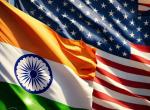
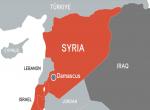
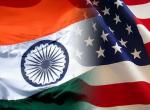

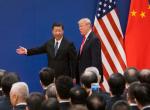
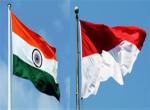


Post new comment